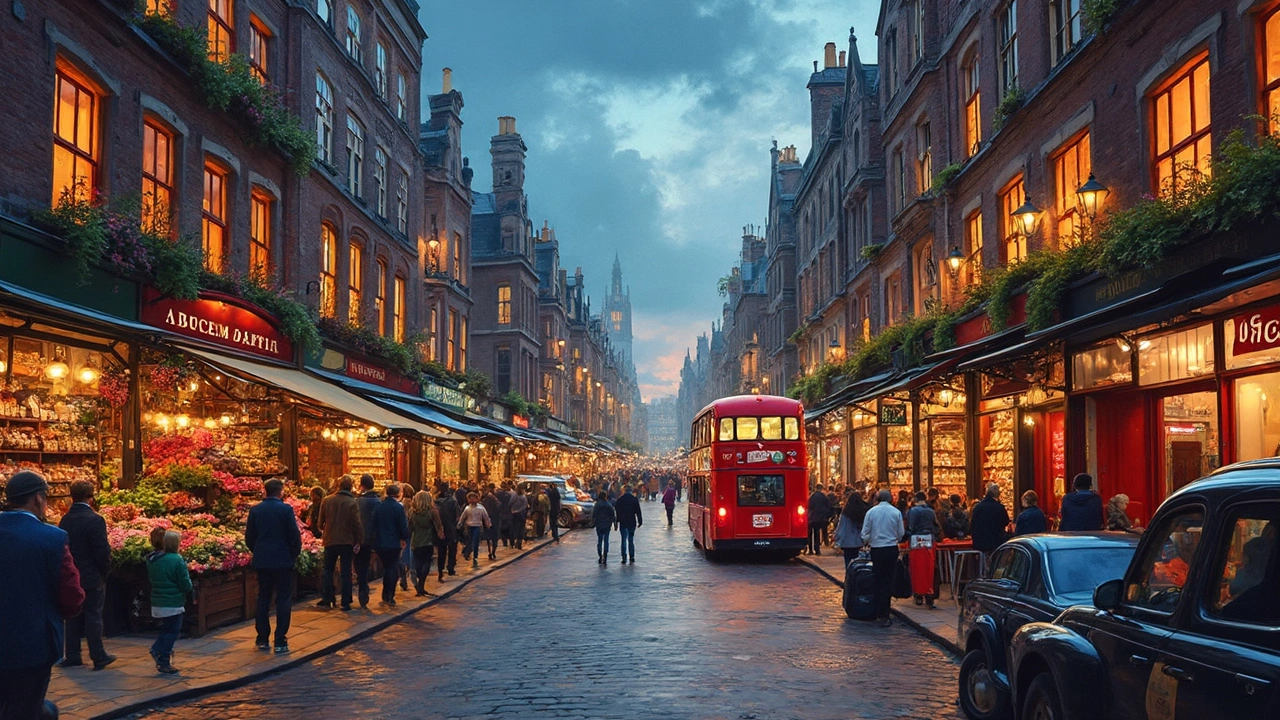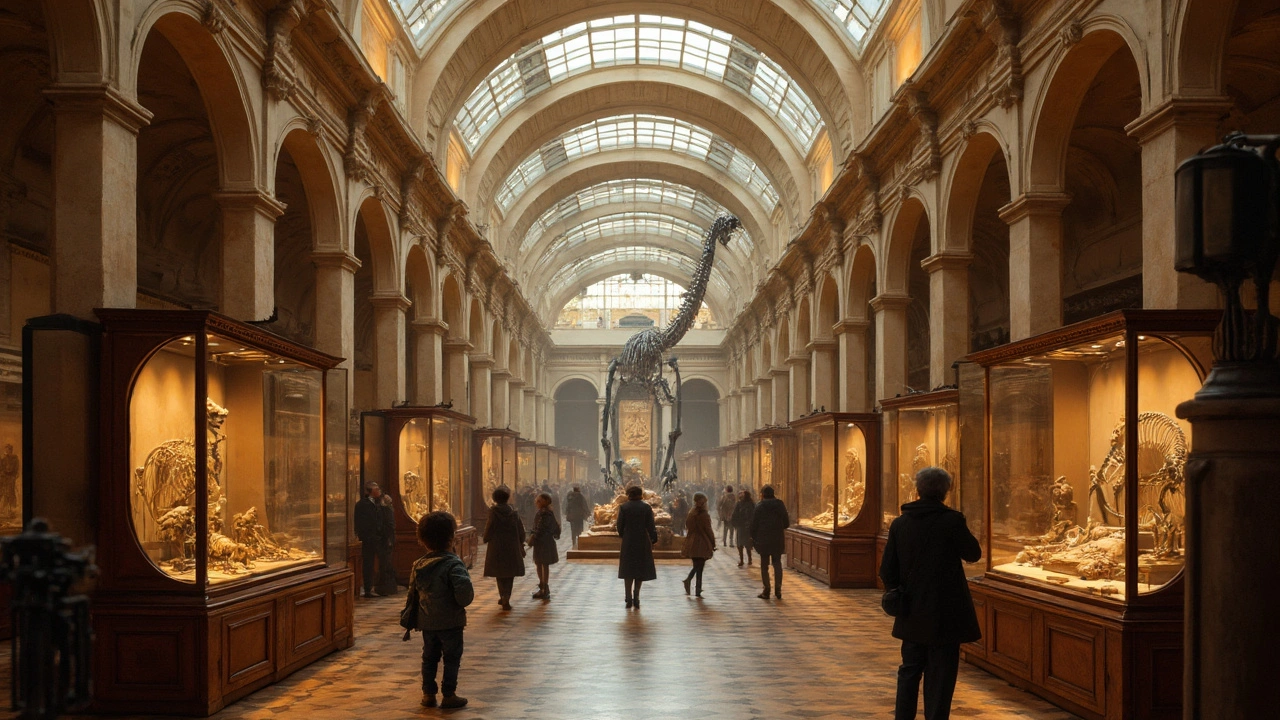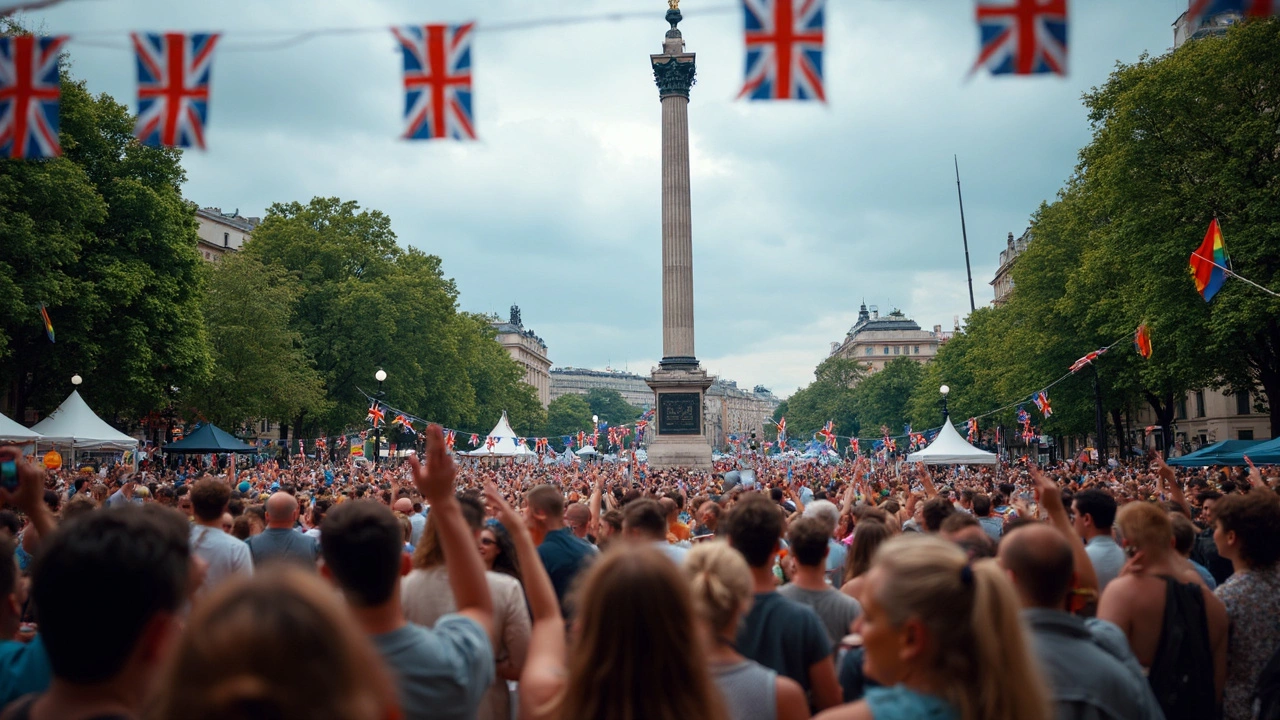London Cultural Experiences That Tell a Story: History, Heritage, and Humanity

Ever wondered how every inch of London seems to have a story? It’s not just the big-ticket spots like the Tower of London or Westminster Abbey—though you should definitely see those at least once. The city’s real magic comes out when you pay attention to the details, like the black cabs that have been around since the days of horse-drawn carriages, or that tiny, 200-year-old pub tucked away near Covent Garden.
If you’re living in London or just in town for a bit, digging into its culture isn’t hard—but it pays to know where to start. The easiest way? Let your feet lead you. Walk around Spitalfields Market and you’ll spot the blend of histories, from the old Huguenot houses to street art that nods at present-day London. Take the Tube, but skip the main attractions once and try getting off at places like Baker Street or Brixton, where you’ll find both stories from the past and vibrant communities shaping new ones.
Don’t feel you need to tick off stately museums in one marathon afternoon. Instead, pick a spot and let yourself ask questions about what you see—why are there dragons on the City’s street posts, and what’s behind those blue plaques you keep seeing on old buildings? London’s layers peel back best when you’re curious. Handy tip if you’re new: free walking tours like those from Strawberry Tours or Secret London run all over town and make a great, low-key intro to everything buzzing beneath the surface.
- Where London’s Past Still Breathes: Landmarks With a Story
- Beyond the Museums: Living Heritage on London Streets
- Taste and Tradition: Food & Markets Telling London’s Tale
- Festivals, Parades, and Public Rituals — London’s Communal Storytelling
- Personal Connections: Meeting London’s Local Legends
- Practical Tips for Curating Your Own Cultural Adventure
Where London’s Past Still Breathes: Landmarks With a Story
Walk around London and you’ll spot reminders of history way beyond the tourist crowds. Sure, Buckingham Palace and St. Paul’s Cathedral get the fame, but even regular locals stumble on fresh facts every time they pass by the city’s landmarks. The truth is, these sites aren’t just pretty—they tell the story of everyone who’s called London home. You don’t need fancy guides, just a bit of curiosity and maybe a comfy pair of shoes.
- London culture is front and centre at the Tower of London. Started back in 1078 by William the Conqueror, this place has seen royals, rebels, and ravens. It’s still where the Crown Jewels are kept—if you’re early, you can beat the queues and see them up close.
- The Shard may be new, but it’s built over Southwark, where medieval markets and public executions were daily life. From the viewing platform, you get a fresh look at how the old city sprawls around the new.
- Head to Smithfield Market, where meat’s been traded for over 800 years, and just across the way sits St Bartholomew’s Hospital, founded in 1123 and still running. Not many cities can top that combination of old and useful.
- The Globe Theatre brings Shakespeare’s world to life, but it’s also a showcase for how London keeps old traditions going in a city always changing. Snag a £5 standing ticket if you're up for the authentic (and cheapest) experience.
Want some data? Here’s how London’s top historic landmarks stack up (before the pandemic, these were average annual visitor numbers):
| Landmark | Opened | Annual Visitors |
|---|---|---|
| Tower of London | 1078 | 2.8 million |
| St. Paul’s Cathedral | 1710 | 1.7 million |
| The Globe Theatre | 1997* | 1.3 million* |
| Natural History Museum | 1881 | 5.2 million |
*The original Globe was built in 1599, but the one you visit now is a faithful 1997 reconstruction.
One more tip—look up “blue plaques.” These little signs mark where key people in London’s story lived or worked. There are over 950 of them, and hunting a few down on your own walk can lead you to some unexpected corners of the city. It’s like time travel, but with a coffee shop always close by.
Beyond the Museums: Living Heritage on London Streets
You can walk through London and stumble into stories without ever setting foot inside a museum. That’s part of the buzz here—the city’s London culture lives right out in the open. From historic pubs where locals spin their yarns, to bustling street markets and yearly parades, these spots make London feel alive and present.
Start with street markets. Borough Market has been on its current site since at least the 13th century. Picking up bread from a baker who has a multi-generational stall isn’t just shopping, it’s a living bit of local tradition. Same goes for Columbia Road Flower Market. Early Sunday mornings, the cockney banter, and the riot of colours—this isn’t just for tourists, it’s a social tradition for Londoners.
Not to be missed are the city’s classic pubs like The George Inn in Southwark, which has been standing since the 1600s. Drinkers here probably had a lot in common with folks today: a laugh, a pint, and some gossip about the city’s news. These pubs often carry Grade II listed status, and wandering in is the easiest history lesson you’ll ever get.
Music on London’s streets tells its own story. Buskers are part of the city’s fabric, with designated spots in the London Underground. Some acts, like Ed Sheeran, actually got their start on these platforms—proof that the everyday sounds of the city help shape British heritage.
Street art brings London’s current vibe right on the walls. You’ll find huge, ever-changing murals in Shoreditch and Brick Lane. Banksy and others have turned these spots into open-air galleries, and plenty of locals make a side hobby of scouting for new pieces popping up overnight.
Curious about how many people get involved with these outdoor traditions? Here’s a snapshot from some popular spots:
| Location | Annual Visitors (Pre-2024 Avg) | Days Open |
|---|---|---|
| Borough Market | 16 million | Mon-Sat, some Sun |
| Columbia Road Flower Market | 2 million | Sun only |
| Brick Lane Street Art Trail | 1.5 million | Open 24/7 |
Want to tap into this living heritage for yourself? Here’s how for a real taste of London:
- Chat up stallholders; most love sharing family stories or food tips.
- Time your visit early for markets and flower stalls—the atmosphere is different before crowds swell.
- Don’t ignore side streets: some of Shoreditch’s best street art is on back alleys.
- Check for live performances—websites like Time Out London track busker gigs and pop-up street stages.
So next time you’re in the city, look outside the usual tourist circuit. The streets are full of real London life and stories to discover.
Taste and Tradition: Food & Markets Telling London’s Tale
The fastest way to get London’s true flavour? Wander its markets and try what’s on offer. London food spots are a real showcase of its wild, multicultural history. Take Borough Market—traders have hawked food there for over 1,000 years, so when you grab a sausage roll or Ethiopian coffee, you’re snacking on history. And markets like Brick Lane and Camden aren’t just feeding locals; they’re blending stories from around the globe right in the heart of the city.
Some local food traditions don’t get old. Sunday roast at a classic British pub, especially somewhere like The Coach and Horses in Soho, still pulls a crowd. Then there’s the proper afternoon tea—think Fortnum & Mason or the Savoy—where three-tiered cake trays get snapped for Instagram but have roots going back to the 1800s.
If you’re just visiting or want to try something new without blowing your budget, London’s street food markets serve up dishes from every continent. Mercato Metropolitano in Elephant & Castle is known for its rotating vendors. Looking for Asian street food? Head to Bang Bang Oriental Food Hall in Colindale. For Caribbean snacks and good banter, Carnival Delights at Notting Hill Carnival is a must every August.
Some quick tips to snag London’s tastiest bites and local secrets:
- Go early if you want the freshest sourdough at Broadway Market’s Bread Station or top-quality cheese at Neal’s Yard Dairy.
- Many market stalls start prepping before sunrise, so the best selections disappear by noon.
- Talk to traders—lots have run stalls for decades and love sharing their family stories or tips on what to eat.
- If you’re picking up food for a picnic, London Fields or Victoria Park are classic spots nearby.
Here’s a quick look at which London markets are best for different cravings and what you can expect to pay:
| Market | Best For | Typical Price Range |
|---|---|---|
| Borough Market | Artisan bread, British cheese, street eats | £3 - £12 per dish |
| Camden Market | Global street food, vegan stalls, desserts | £5 - £10 per dish |
| Brick Lane Market | Curry, beigels, vintage snacks | £2 - £8 per snack |
| Broadway Market | Bakery items, fresh produce, local products | £2 - £7 per item |
Want to trace the roots of London culture through what you eat? Make a point to visit a few markets and try one old-school classic and something totally new. That’s how Londoners do it: keeping traditions alive, but always ready for the next flavor.

Festivals, Parades, and Public Rituals — London’s Communal Storytelling
Want to see London’s character on full blast? Check out a festival or a parade. These aren’t just big street parties—they’re living history, broadcasting what this city is about right now. Some of London’s biggest, loudest, and strangest events trace their stories back centuries, while others have popped up more recently as the city keeps changing.
The London culture scene beams brightest during annual events like Notting Hill Carnival, which started in 1966 as a celebration of Caribbean heritage and is now Europe’s biggest street festival, drawing close to 2 million visitors over August Bank Holiday. If you want tradition with a twist, the Lord Mayor’s Show is hard to beat—it’s been running for over 800 years. Every November, a full parade snakes through the City, featuring everything from marching bands to the iconic golden Lord Mayor’s coach. Weirdly enough, you’ll spot modern fire engines alongside medieval guilds. It’s a total clash of past and present in real time.
Public rituals keep popping up in unexpected ways. Bonfire Night (5th November) is legally marked with fireworks outside every Sainsbury’s and huge displays in places like Alexandra Palace and Battersea Park. Much less mainstream, but just as local, is the Pearly Kings and Queens Harvest Festival—it happens every autumn at St Mary-le-Bow Church. If you see someone in a black jacket covered in shiny buttons, you’ve just bumped into a Pearly.
If you’re keen for something a bit offbeat, here are a few favourites locals swear by:
- Chinese New Year in Chinatown – Massive parades, lion dances, and unbeatable street food (January/February)
- Pride in London – Sometimes over a million folks show up to cheer the LGBTQ+ community through the West End (June/July)
- State Opening of Parliament – Spot the Queen’s Guards and the weirdly old-fashioned rituals right by Westminster (May or whenever the session starts)
- Tottenham Ploughman’s Festival – Quirky, locally-run, and full of British countryside energy in the middle of North London (September)
Some of these are totally free, so no need to blow your budget to get involved—just turn up, join the crowd, and soak up whatever’s happening. Here’s a quick look at how big some of these events are compared to each other:
| Event | Year Started | Estimated Attendees (2023) | Cost to Attend |
|---|---|---|---|
| Notting Hill Carnival | 1966 | 2,000,000 | Free |
| Pride in London | 1972 | 1,500,000 | Free |
| Lord Mayor's Show | 1215 | 500,000 | Free |
| Bonfire Night at Alexandra Palace | 1605 (nationally) | 100,000 | £15-£18 |
Inside tip: double-check dates before going, as London likes to update or reschedule things at the last minute, especially after 2020. Check the Transport for London website on festival days, or use Citymapper, since streets get blocked off and Tube stations can get jammed.
Personal Connections: Meeting London’s Local Legends
London isn’t just famous for its landmarks—it’s defined by its people. Some local legends might not have statues, but they shape the city’s vibe every day. There’s Tyler the Covent Garden street performer, who’s been juggling for crowds since the early ‘90s, turning tourist selfies into must-see mini circus acts. Then you’ve got the Pearly Kings and Queens, decked in pearl-button suits, carrying on a charity tradition that started back in the 19th century.
If you want to really plug into London culture, strike up a chat with market traders at Borough Market, the city’s oldest food market with records going back to 1014. It’s easy—just ask for a food recommendation, and you’ll get a story along with your cheese or bread. Or wander down to the iconic Book Mongers in Brixton. The owner, Patrick, has handed out book picks and punk history lessons for 30 years and counting.
A lot of Londoners love sharing their tales, especially in familiar spots. Some ways you can meet and learn from the city’s people:
- Join a guided walk like The Women of London tour—these are often led by historians or lifelong locals sharing unfiltered stories of the city’s Queens, rebels, and changemakers.
- Drop by community spaces, like The Poetry Café in Covent Garden, for open mic nights where you can chat with homegrown writers and artists.
- Head to the Saturday Columbia Road Flower Market not just for the blooms, but for banter with the stallholders—families have run stands here for generations.
- Look for heritage temple keepers, like those at London’s Bevis Marks Synagogue (since 1701), where guides know every corner of British Jewish history.
Locals often remember the famous faces spotted in their neighborhoods, so don’t be shy about asking a waiter, cabbie, or shopkeeper if there’s anyone you should look out for. London also celebrates living legends each year with events like Southbank Centre’s Literature Festival, where you can literally bump into top authors after a reading.
Want some numbers? Here’s a quick picture of how people connect with London’s legends:
| Activity | Annual Visitors | Notable Figure |
|---|---|---|
| Borough Market | Over 25,000 per week | Long-term traders (cheese, bread, fish) |
| Covent Garden street acts | Millions each year | Tyler Phillips & other classics |
| Columbia Road Flower Market | Thousands each Sunday | Family market traders |
| Southbank Literature Festival | Over 15,000 per event | Authors, poets, activists |
If you give people your curiosity, you get back real stories—the kind you’ll never stumble across in guidebooks. And that’s what London’s living heritage is really about.
Practical Tips for Curating Your Own Cultural Adventure
If you want to get under the surface of London’s cultural scene, it helps to plan—but leave enough space for surprises. Start with the basics: check the London Transport Museum for a quick story on how the city’s famous Tube shaped whole neighbourhoods. You can buy an Oyster card for cheap and get to almost every corner fast, even late at night.
For real-life stories, free walking tours from companies like Strawberry Tours or Free Tours by Foot are perfect, as the guides pour in quirky info about everything from old city walls to the legends of Southwark’s pubs. Book a spot online, and don’t forget cash for tips—the guides genuinely deserve it.
- Mix up big names like the British Museum or the V&A with less crowded spots, like the Museum of London Docklands, where you’ll see the raw history of trade and migration.
- Check listings on Time Out London or the Visit London website. They’re updated with neighborhood festivals, quirky pop-ups, and food markets that often celebrate local London culture.
- Use apps like Citymapper to slice what looks far apart into quick Tube or bus rides—it helps you pack in more experiences without wasting money on cabs.
- Don’t ignore community centers or local libraries. Spots like the Idea Store in Whitechapel put on free language events, workshops, and even local walking history sessions.
For food, skip the touristy chains. Instead, try Brixton Village for Caribbean jerk chicken or pop down to Borough Market for cheese from Neal’s Yard Dairy or fresh Ethiopian coffee. At local markets, just ask vendors for their story—a lot of them are proud to share family secrets and local history.
If you’re after smaller events or looking to meet locals, check out Meetup.com or Eventbrite for interest groups focused on everything from classic British film nights to East End heritage walks. Just go, even if you don’t know anyone yet. Londoners are sometimes reserved, but most people love sharing what they know about their city when you’re genuinely interested.
Snap photos for memories, sure. But try to wring every drop out of your day by putting the phone away occasionally—notice the smells, the accents, and especially the little details like the hidden street mosaics or the sound of church bells at noon. That’s where London’s real stories live.


